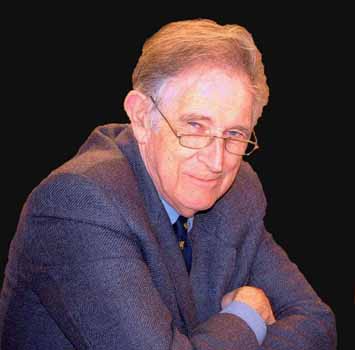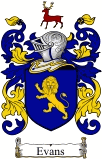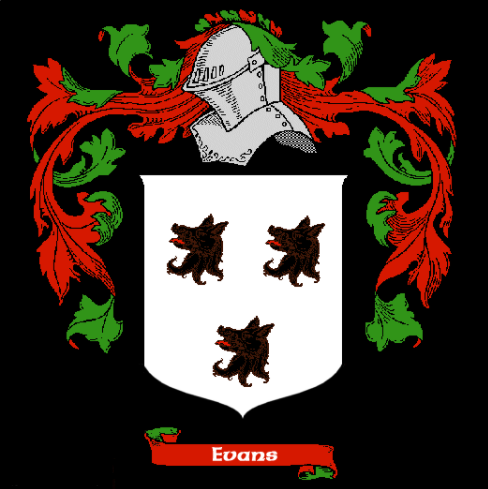EI6LC
menu
EI6LC Biography page
I was born in
Nottingham, England in 1958. To be more precise, near Beeston.
I was baptised at Holy
Trinity Church, Lenton, Notts.
My father was Peter Evans, G3DLH, who owned University
Radio in Nottingham.
Many radio amateurs-to-be came into his shop during this time,
including later operators, G3GRL, G3SJJ, G3OZF - G3BJ.
We moved from Nottingham to Cornwall in 1959 and my parents ran Ann's
Pantry a general shop (since then it has been an opticians, estate agents and wedding shop amongst other things) in Carbis Bay.
In 1961 they had a new house called Chylowen built in Carbis Bay on a
road called Wheal Whidden (meaning Whidden Mine in Cornish - a tin
mine, that is). We lived there until 1968. I very often went
down into the basement and watched my Dad work VKs using CW. He used an
AR-88D
receiver and a KW
Viceroy III transmitter and a Telegraph Apparatus Co.
'Hole in the Wall' bug. He also helped with and built 'The Cornishman' which was a local Cornish Radio Amateur Club project.
In 1968 my parents visited Bermuda, going to see my mother's old
friend Marian
Holland (RIP, 2016). My mother had worked in Nottingham with Marian in the
accounts department of Players
Cigarettes after WWII. Shortly afterwards, we moved to Bermuda. Selling our house in Carbis
Bay and (hopefully) going forever. Even the massively heavy amateur
gear went along. Dad very soon got the callsign VP9GG. I very quickly settled in, going to
Whitney
Institute
for schooling (at that time it was a Primary & Secondary school).
I adored this school and our class teacher Ollie Mc Kittrick.
Unfortunately, my mother didn't settle in well. After just less than a
year we left Bermuda. I can remember very well the Friday afternoon that this was decided and I cried (silently) for hours.
After being in Bermuda we moved back to Carbis Bay in Cornwall, to Sunlea. This was a couple of weeks after Apollo 11.
1971-2:
Through hard work and the teaching of David, G3NPB. I joined
the RAE class at the St. Ives School late - one term late - joining
it one third into the way of the teaching. In a frank comment, David
said I had "no chance of passing this year, but maybe next year"........
I started the course in January 1972, finished it in May 1972 and passed in June 1972.
 In memory of G3NPB, 13th July, 2015. Annoucement.
In memory of G3NPB, 13th July, 2015. Annoucement.
During many years, David was responsible for the best teaching of the
RAE (Radio Amateurs' Examine) in Cornwall. He taught many of the best
radio amateurs in Cornwall. These included G3YZY, G3YZX, G4AMJ, G4AMT,
G4AGZ, G4BHC, G4BHD, G4BKI, G4BPJ and many others.
After 10 years or so [1982], our paths crossed again in the design of
GB3SI, a 2m repeater for St. Ives. I made the main chassis, RF deck and
one of the first uProcessor repeater controllers in the world. David helped in
the site clearance (along with me). After adding seriously good duplex
filters, we had one of the best range repeaters in the
country/continent/world.
This had been one of the most reliable 2m repeaters in the world, staying on the air except for less than 2 minutes in 20 years!
We were visited by VP9GE
in 1972. This was just before I got my licence, G4BKI, which was
on 29th August, 1972. I was just 14 and was one of the youngest ever
hams in the UK (there was an age limit of 14 on the licence back then).
My brother had got his licence (G4AMJ, NQ0I, now N7DR) the year before and
was 15 at
the time. My Dad gave up smoking and threw his savings into a pot for a
while and bought an SB-102
, External VFO, speaker and PSU. This was only after he had
massively helped Doc and I with 2 HW-101s.
Just before my licence was on the way, Dad and I built my first
rig, the second HW-101 in the household. Soon after a 400Hz CW filter was added. Imagine. Three stations,
lots of antennas and all on the air at the same time. There's no way
that modern transistor rigs would handle the RF power around.
It was also through my Dad's (G3DLH) determined
teaching of CW to me over the space of 6 weeks to 12wpm+. It wasn't
easy and I wasn't a natural. I'm afraid I
also swore that I wouldn't ever use CW after I passed the test. This
was true for the first 6 months on the air.
[I actually got news of my licence arriving and what my callsign was,
while I was in the Isles of Scilly, on holiday. The minimum age to hold a licence in those days was 14 years. For the record, I got mine
at 14 years and 115 days, the youngest radio amateur to do so at that
time].
My brother, G4AMJ (NQ0I, then N7DR) let me know that the "I" at the end
was horrible on CW......... My family went to the QTH of Mike Goody, G3RPC. We went out to his
garden shed and I actually worked a W6 on SSB (GASP!) as my first QSO. Being pushed on the mic was terrifying!
Then, slowly, very slowly, I started to use morse. After we built a home
brew keyer with Barry, G3YCZ, in Hayle, Cornwall. I have to thank Barry for his help in this. He helped with the
case and the paddle movement, while Dad and I built the TTL keyer
circuit on Veroboard. I can see it now - grey paddle, metallic green
box, silvered plastic knobs (On/Off and Speed). It ran off 240VAC.
Mostly made from RS parts (that's Radiospares, NOT Radio Shack!). Gradually, it took over my radio
life. If it wasn't for Morse I wouldn't bother with amateur radio. The
other modes are just too boring.
It didn't take me long to work CW every day on 21MHz, even with the
solar cycle at a low......... In fact, I went out of my way to work AT LEAST 10 Ws per night - at
19:00z. After I had done my school homework. I worked a number of stations at gathering speed, including W1TW, my
best friend. I think I must have worked him just about every night.
I started to chase DX on CW and soon reached 230+DXCC countries. Not easy in those
days. No cluster. Just EARS. I was using the HW-101, 100W and a long
wire with a KW E-zee Match.
My other secret weapon was the Heathkit 'Scanalyzer' SB-620 which is
emulated these days by all the fancy modern SDR rigs with their
waterfall display.
As my speed increased, I still went back into the 21MHz Novice band to
work and work and work my friends and help them speed up into their
next step. One of them [WN1NNC] turned out to be Jim, later K4OJ.
At age 16, we moved back to Bermuda and I went to Bermuda
College (Sixth
Form centre in Prospect) to take A levels. I used the callsign
G4BKI/VP9. That
was
about 300-500 QSOs per NIGHT on CW. It was easy. I was using an
FT-101 which we modified to switch in a CW filter, borrowed from Van
VP9GK. At this time I also joined the 'gang' for CQWW SSB and CW at
VP9IB; operating with VP9IB, VP9IX, etc. for a record couple of contest
scores. We had SIX FT-101s and by the time we finshed the contests we
had broken five of them!
Bermuda attracts a lot of well known people - Nick Faldo, Arnold
Parmer, etc. Dad was fortunate to work with customers such as Jose
M. Bosch (owner of Bacardi International!) and George
de Mestral (inventor of Velcro).
After making WAC, DXCC and other stuff in quick order, it was time to
leave the nest and go to the University
of Warwick. At University I
studied Physical Electronics (Physics and Electronics). In between
terms I went back to Bermuda to take time off. During my final visit of
that time (age 21), I not only wrote my Finals Practical Project Thesis, but
also passed my local radio exam. I won the local CW contest and
the next day I took the RAE (Radio Amateurs Examination). I passed the theory exam and the CW and
got VP9KF. My
local CW score was a
record which still stands to this day (and I still have the Winners
Tankard). Unfortunately, the Bermuda Contest used to be the
top one in the World, but is now no more.
After University life, I moved on to a job at Plessey Microwave in
Towcester, Northants, UK. Actually, it was called Plessey Optoelectronics and
Microwave, but the two units were being split apart shortly before I arrived there. 'Opto' went on to
become a part of Plessey 3-5, which was founded to exploit MMIC
technology having been invented at Plessey Caswell by Jim Turner et al.
After 18 months working on Oscillator products, I
became responsible for the following product lines, including the
material growth (Epitaxy), device manufacture/testing/bonding/QA of:
Gunn Diodes: 5mW to 500mW, 8GHz to 40GHz; CW and pulsed [GaAs]
Broadband detector diodes, varactor diodes [Si and GaAs]
IMPATT diodes: 2mW to 200mW, 45GHz to 240GHz; CW [Si]
TRAPATT diodes: 25W, S band; pulsed [Si]
During 1985 we were moved away from shared facilities with 3-5 and I played a
major part in the design and build of new cleanroom and production
facilities in an older building that had been used for ferrite
production in WWII(!). This took nearly six months of working 7 days a
week and at least 12 hours per day. This continued as a very risky
re-location of epitaxy production moved a few miles from Caswell
research to our 'new' building almost as soon as we had device and system assembly back on stream.
Then, in Spring 1988 Plessey Microwave and Plessey 3-5 were rejoined at the hip and
became solely Plessey 3-5 Group, although I don't think we ever ran out of
'Microwave' product labels and stationery!
On
Monday 8th May, 1989, Plessey 3-5 was closed deliberately (by the
Plessey
Board after a meeting in our engineering office [yes, yours Brian
Mazonas]) in a particularly nasty takeover of the whole Plessey Group
by
GEC-Marconi. Very soon there wasn't much left of the ex-Plessey units
(~58,000 jobs) and within 4 years parts of GEC were closing rapidly
too. On Friday 3rd November, 1989, the skeleton group of 8 remaining
engineers [I was one of them] left Plessey 3-5 for the last time after
having
produced 400,000 250nm FETs
on a remaining order for the first DBS receivers.
What followed then was a year as a separate design group being formed
at GEC-Ferranti in Milton Keynes (from about 10 of us who had been
inherited from Plessey 3-5). This was formed by Mike Tench, who was
really my first line boss at Plessey, above Helen Duncan. During this time we were "kept in
mind" as engineers of repute. This group was then split up with Mike
Tench going
into managership and just two of us going into engineering for the main
GEC-Ferranti Airbourne Radar group [myself and Jeremy Binley]. For nearly a year we were given
absolutely nothing to do but show up and get paid. Then we were brought
into the radar group and did a few interesting things. The whole site
was moved from horrible 'huts' to a big new flashy building. Within a
few
months I knew it couldn't go on and made my escape. 4 months after
leaving, all of the staff (600+) were let go and the brand new site was
empty.
To distract myself I spent a lot of time and money adding to the GW8GT
Red Dragon Contest Group, setting many contest records. This included my friends G3OAY,
G4IFB (now ZL2IFB), G4VXE, GW5NF, GW3NWS, G3SQX, GW4LXO, GW4TTU/now F4VPC, GW0MAW, GW4JBQ, GW6ZUQ, GW3KYA (SK), G3LNS (SK) and many, many others.
In 1989, 1990 and 1991 I toured the Caribbean. Going from Barbados (8P9FT) to
St. Vincent (J8/VP9KF) and other places. Around this time I joined FOC, member number 1578.
On 2005-12-25 in a fit of madness (!) I asked Ann to marry me. She said
yes.
We quickly
moved ahead and were married in Bermuda on 2006-03-20. Present
were our friends Donna (Matron in Honour), James (Best Man), Ann's friend Stacy and family
members, including my Brother, his wife (Jenny) and Sarah
(their daughter). Mostly, my Dad, VP9GG, was there, as was VP9GE.
In 2006-11-01 to 2006-11-15 we went back to VP9 on our Honeymoon.
Including our wedding we have been to Bermuda (recently) for:
Two weeks in
March, 2006, Two weeks in
November, 2006, Three weeks
in May/June, 2007. (During which we became great friends with many new
and old aquintances), Two weeks in
October/November, 2007, Two weeks in
April, 2008, Two weeks
in November, 2008, Two weeks in
April, 2009, Two weeks
in November, 2009, Two weeks in
April, 2010, Two weeks
in November, 2010, Two weeks in
April, 2011, Two weeks
in November, 2011, Two weeks
in April, 2012, Two weeks
in November, 2012, Two weeks
in November, 2013.
Our renewed aquintances are: Don Mason (VP9HS), Jackie Bacon
I'm searching for: Mr.
(Ollie) McKittrick, Ken
Hubbard (unfortunately now SK) and
Pamela Spearing, Susan Bailey, Barbara
Hollis, Veronica
Hollis, Vivienne
Hollis (now Craig?), Veronica Whiting, Jamie
Tucker, Georgie Masters (RIP), Simon Nicholl-Griffith, Karl Terceira,
Gina
Swainson, Bruce
LeSeur, Scott McKenzie, Carla
Dale, Chris
Cooke, J.J.
Outerbridge (RIP), Andrew Stirling, Joey (Allan)
Mello and anybody else from J6 Whitney,
1968/1969.
Family Note and for the record: My parents are buried here.
My grand parents
and Uncle Fred are buried here. I really, really miss them.
The Evans family building business was the largest builder in
Nottingham in the 1920s and 1930s. Included in their builds were: Notts
County football club, Nottingham Forest football club, Trent Bridge
cricket ground, Nottingham Railway Station, Market, Ice Rink (since
demolished and rebuilt), thousands of council houses and ~1000 'build
for us' houses. If a house is painted green and cream in Nottingham, it
was probably built by 'us'.
Some Amateur Radio friends: G3SJJ, G4AMT, F5VHC (G0CMM), G0ALA (G8FCZ), G8IAM, G8MIA, G4CDW, G4BHC, G4BHD, G3UCQ, ..........................
Amateur Radio Bests (ONLY CW!):
Contest - CQWWCW 1992 - 235 QSOs per hour from GW8GT.
Contest - CQWWCW 1995 - 231 QSOs per hour from W1CW.
Contest - CQWWCW 2003 - 286 QSOs per hour as J37KF (14MHz only).
DX Pileup - 608 QSOs in 2 hours = 304 QSOs per hour as VP9KF (2011-11-11, JA pile-up).
arfooter
Callsigns: G4BKI, G4BKI/VP9, VP9KF, 8P9FT, J8/VP9KF,
W4/G4BKI, G4BKI/J3, J37KF, V31WJ, F/G4BKI, TK/G4BKI, EI6LC
footer
© 2022-2025 EI6LC. All rights reserved.

 WWV Log
WWV Log 

 WWV Log
WWV Log 


 In memory of G3NPB, 13th July, 2015. Annoucement.
In memory of G3NPB, 13th July, 2015. Annoucement.